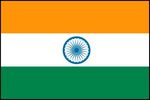Targeting the unbanked in India will be lucrative
 Banks in India want to deliver banking services to low-income
groups at an affordable cost and make money out of this. There is
indeed enormous scope as only 59% of adult population in India has bank
accounts. If one takes a look at the number of bank accounts vis-à-vis
the entire population, the percentage comes down sharply to 31%. This
is also not an entirely correct estimate as a large chunk of population
in urban India has more than one bank account. So, the actual coverage
is much less. In rural areas the coverage among adult population is 39%
against 60% in urban India. How does this compare with a developed
country? A recent survey commissioned by the British Bankers’
Association says 92-94% of the population in the UK has either current
or savings accounts.
Banks in India want to deliver banking services to low-income
groups at an affordable cost and make money out of this. There is
indeed enormous scope as only 59% of adult population in India has bank
accounts. If one takes a look at the number of bank accounts vis-à-vis
the entire population, the percentage comes down sharply to 31%. This
is also not an entirely correct estimate as a large chunk of population
in urban India has more than one bank account. So, the actual coverage
is much less. In rural areas the coverage among adult population is 39%
against 60% in urban India. How does this compare with a developed
country? A recent survey commissioned by the British Bankers’
Association says 92-94% of the population in the UK has either current
or savings accounts.
The world’s second fastest growing
economy presents a very uneven picture when it comes to banking. The
unbanked population is the highest in the North-East. For instance, in
Manipur, only 17 of every 100 adults have a bank account. In Nagaland,
the number is 21. Meghalaya has the maximum number of bank accounts
there—44 per 100 adults. Eastern India is no better off with just 33
out of every 100 adults in Bihar holding bank accounts and, 34 in
Orissa.
Some states in north and west India have on the
other hand, problem of plenty. For instance, every 100 adults in
Chandigarh have 221 bank accounts. The comparative figure for Goa is
187, New Delhi 166 and Punjab 105.
These figures, however,
talk about deposit accounts kept with banks. When it comes to accessing
bank loans, the scene is worse. The credit market is very small with
the number of loan accounts constituting only 14% of adult population
in India. In rural areas, the coverage is 9.5%. Regional differences
are glaring with the credit coverage at 25% for the southern region and
as low as 7%, 8% and 9%, respectively, in north-eastern, eastern and
central India.
Out of 203 million Indian households,
three-fourths, or 147 million, are in rural areas and 89 million are
farmer households. In this segment, 51.4% have no access to formal or
informal sources of credit, while 73% have no access to formal sources
of credit. Similar data is not available for non-farm and urban
households.
The share of non-institutional sources for
finance reduced from 70.8% in 1971 to 42.9% in 2002, but strangely,
after 1991 when India opened up its economy, the non-institutional
sources’ share has increased. The share of moneylenders in the debt of
rural households increased from 17.5% in 1991 to 29.6% in 2002. This
has happened despite the growing reach of bank branches. There were
8,321 branches of commercial banks and regional rural banks in 1969.
Now, there are close to 69,000 branches. With this, the size of average
population covered by each bank has been cut drastically—from 64,000
per bank branch to 16,000.
(Source: Extrait de http://www.livemint.com/)



/http%3A%2F%2Fleboursier.ma%2Fimages_bouse%2Fbig%2F09-08-2018%2Fbam01110.jpg)
/https%3A%2F%2Fwww.africa24tv.com%2Fsites%2Fdefault%2Ffiles%2Fscald_big.jpg)
/https%3A%2F%2Fstatic.latribune.fr%2Ffull_width%2F1012728%2Fabidjan-circulation-cote-d-ivoire.jpg)
/http%3A%2F%2Fwww.midi-madagasikara.mg%2Fwp-content%2Fuploads%2F2015%2F01%2Flogo.png)
/https%3A%2F%2Fprofilepics.canalblog.com%2Fprofilepics%2F3%2F4%2F341279.jpg)